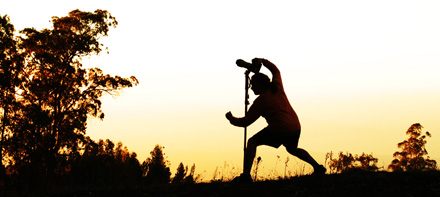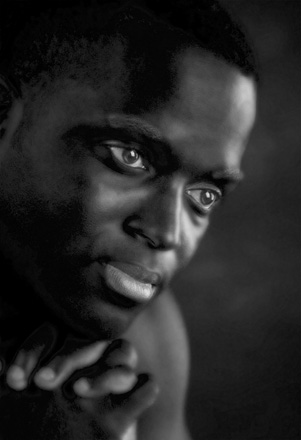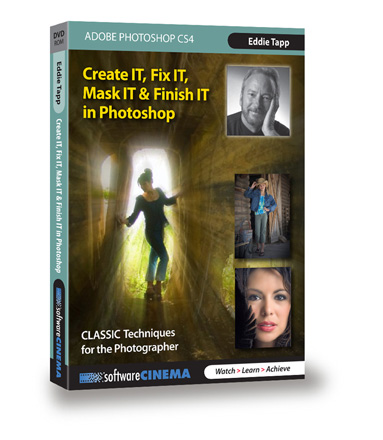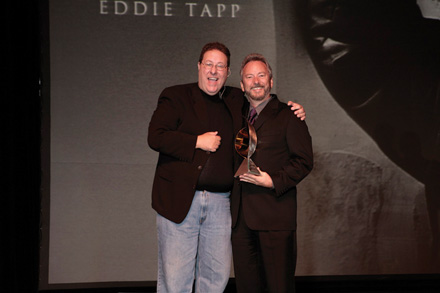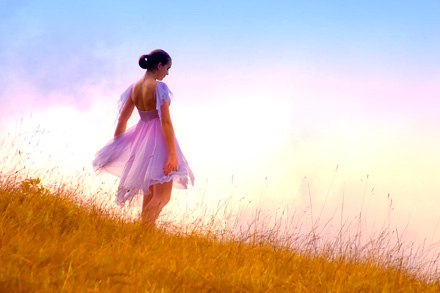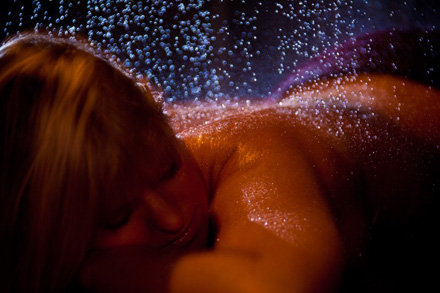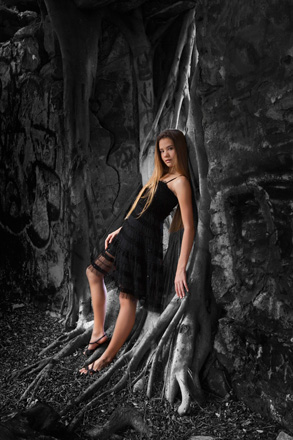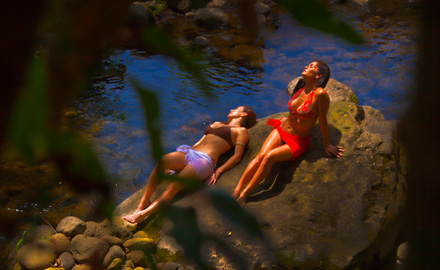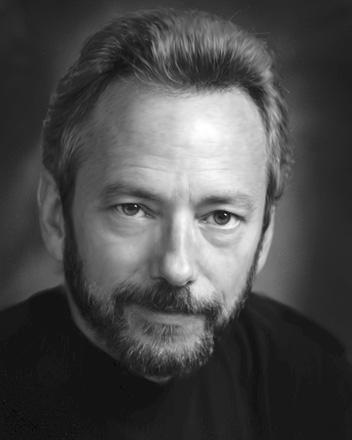
Portrait of Eddie Tapp / Image © Phillip Charis
Half the Image
There are primarily three ingredients that make a photograph become a part of you. Looking at images from the likes of Joe McNally, you would make a quick assumption that the subject matter is high on the list, and naturally the subject matter itself is what we see. But that is aesthetical rather than technical, and aesthetics I’ll leave for later. Technically, there are three ingredients that bring us into a photograph. I’ll get to that later too.
Without thinking about it, look through a magazine that you’re not so familiar with (and maybe ones that you are). As you flip through the pages, something will stop you and you will give this page your undivided attention. When this happens, chances are something visual grabbed your attention first.
Okay, with my arm twisted, these three ingredients that generate exceptional images, and bring us into the image, are Light, Composition and Exposure. There are a host of neurological (left brain, right brain) senses or pulses that are involved, but the one that I want to address today is Light. Just a small segment of Light but one that is equally important to many other aspects, seeing the light.
Aesthetically speaking:
Learning to “see the light” is perhaps the single, most exciting experience in one’s imaging life. It becomes a life changing moment. You suddenly realize that you’ve seen the light most of your life, but you’ve never actually “seen” the light itself. When this happens to you, it will change your life forever… You’ll find yourself seeing the light everywhere you look, every moment of the day and night, and you will realize how amazing light is. You will notice the shadow. A shadow is created from light. I always felt dismayed when a client would say… “Can you get rid of that shadow?”… OMG… Are you kidding me…? I would think… light is an ingredient that creates shape, shadows, mood, eye flow…
One of the assignments I give when teaching light in workshops is to have each person look through a magazine as mentioned, any kind of magazine. When you come to something, anything that interests you… STOP…! One at a time, we’ll look at the page each person selected and study the reason they stopped at this particular page, ad, or article. {side note} There are 4 stages (objectives) of a successful piece, 1. Get their attention, 2. Draw their interest, 3. Read and understand, and 4. The response stage. It is stage one, Get their attention, that we look at in this exercise. In 8 out of 10 cases, there will be superb lighting in the image or illustration that has invoked one’s attention enough to STOP at that page. The next time you are looking at something that interests you in a magazine, remember this exercise and see for yourself, and then take a few moments and study the light.
This brings me back to “seeing the light”. We’ve all seen the beautiful sunsets, sunrises and the light that gets our attention. We have felt the exhilaration and even excitement as we become mesmerized with this splendor. These are the perfect times to have the experienced “seeing the light” if even for the first time.
Technically Speaking:
There are four lights of nature…
$#x2022; Specular highlights
$#x2022; Diffused highlights
$#x2022; Diffused shadows
$#x2022; Me and my shadow
These four lights of nature become most prevalent when one learns to “see the light”, but you can certainly master these elements to perfection without awakening your senses aesthetically.
Viewing the light on a portrait is a good way to learn to see light. In the skin tone look for the specular highlight. You can easily see it in the eye as it shows up as a reflection of the lighting source, but look at the skin and notice the specularity of the light on the cheek, nose or forehead.
It’s on the skin tone color that we associate the Diffused Highlight region. Next notice the nose or side of the face that is in shadow. This is the Diffused Shadow. And then there is the “me and my shadow”, usually off the image but is sometimes noticeable from the nose shadow on the cheek. So what do you mean by “half the image?” I’ll get to that in a minute.
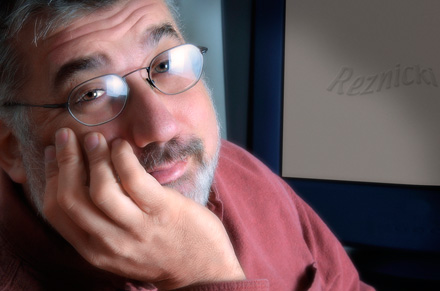
Portrait of Jack Rezinicki / Image © Eddie Tapp
Light Quality:
Seeing light brings the appreciation of seeing light quality. The quality of light falling on a subject can stop you in your tracks. Light is one of the three ingredients that draw us in. How does direct sunlight generate specular highlights compared to a diffused light caused by a cloudy day and so on? Different types of lighting consist of natural, re-directed & reflected, continuous & strobe. Each generate a certain quality, but can also generate the same quality. Seeing the light is one thing, but learning to use the light and create or take advantage of the light quality is yet another. I think learning the basics of portrait lighting is one of the best ways to become familiar with seeing light technically, and from there one can shape with light on any subject.
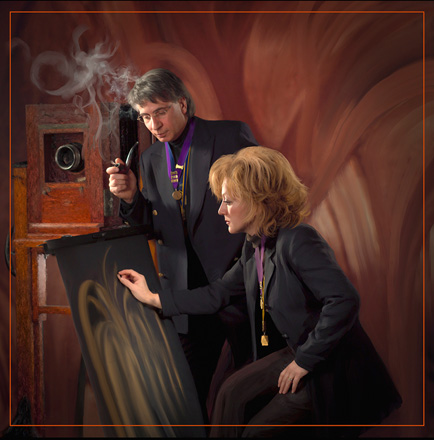
Portrait of Louise & Joseph Simone (Simoneportrait.com) / Image © the late Big Daddy, Don Blair
The Other Half:
When I was going to school at Massey Jr. College (now the Art Institute of Atlanta), studying photography (okay, back in ’69), I would love working in the darkroom because there I would be able to do my final cropping, burning and dodging and more. But it was at this time I heard someone named Ansel Adams make this statement, “Half the image is created in the camera, and the other half is created in the darkroom.” Hearing this, I knew I was on the right path. Needless to say, Photoshop is the darkroom that I’ve been using since the early ’90s.
Learning is FUN:
If you’ve never been to a Photoshop World conference, you may not know the full extent of how much FUN learning can be. But when you are in love with something you are learning, it’s going to be fun getting to the next level. In my world today, I’m having a blast learning and learning, and I don’t think that will ever stop as I learn something new every day.
I’m proud to have online training sessions available for you at Kelbytraining.com, along with several books: Practical Color Management (co-author Rick Lucas), Photoshop Workflow Setups written for Photoshop CS2 but is a superb read (O’Reilly), and my newly released interactive Double DVD training series Create IT, Fix IT, Mask IT and Finish IT in Photoshop, produced by Software-Cinema.com (where I have a special 15% discount for you if you order using the checkout code “ETNAPP”. Check it out here.)
Visit eddietapp.com and my blog… BLOG..??? Oh my, I’ve been so scared over the years to have a blog… But having this opportunity to try and make the King smile with GBW (Guest Blog Wednesday), I’m getting over my fear a little bit. But the truth is, this is my first blog, my first day having a new blog is today, and my web master tells me once I start using it it’ll be very easy… I’m sure that’s true but give me a few days to get use to it… Writing this GBW is a huge honor for me and thanks for reading this… I have some cool ideas once I get my blog going…
About me:
One of the greatest honors in my educational career was being inducted into the Photoshop Hall of Fame in 2006, and as a photographer one of the greatest honors was being invited to be an Explorer of Light with Canon USA. I am also proud and blessed with the highest awards from the Professional Photographers of America (PPA) which include the Gerhard Bakker Award, National Award and Directors Award, Master Photographer, Photographic Craftsman, Master of Electronic Imaging, Approved Photographic Instructor and Certified Professional Photographer.
As an educator, hearing that I was able to influence someone’s experience in imaging makes me proud. I recently gave a presentation to high school students covering lighting, shooting and using Adobe Photoshop. To me this was one of the most honoring seminars in my career.
Oh, just one more thing before I forget… I have a fun workshop coming up in Iceland in August, details are on my website.
What now:
Learn something new every day, learn at least one thing from every seminar, workshop, Photoshop User TV podcast etc.. Learn from many, but study from a few select that you have great interest in. Use the three ingredients Light, Composition and Exposure to your benefit, study compositional elements, eye flow, textures, colors and most importantly, seeing how Light becomes the most beautiful ingredient for your images.
What a genuine honor for me to guest blog… Thank you Scott Kelby for allowing me to be on GBW… you are a blessing to many.



